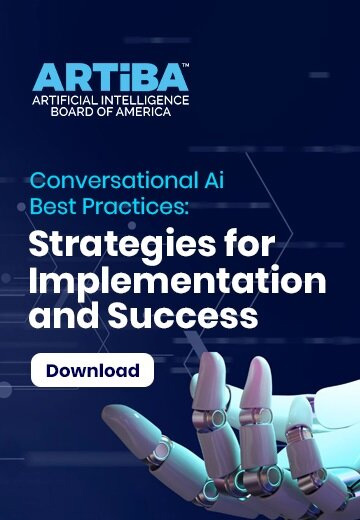The global IT industry is undergoing a profound transformation in the way organizations structure their workforces, allocate responsibilities, and define professional competencies. What began as a response to efficiency pressures has now evolved into a deeper structural reconfiguration driven by automation, artificial intelligence, and new models of product-centric delivery. Across North America, Europe, and Asia, firms are rethinking their organizational models. The result is visible in workforce restructuring, a contraction of management-heavy layers, and a greater demand for professionals who combine leadership with technical and product expertise.
From Service Delivery to Product-Centricity
For more than two decades, the global IT services industry scaled by leveraging large teams that managed processes, coordinated delivery, and interacted with client organizations. This pyramid-shaped structure allowed firms to distribute tasks across layers, with senior managers focusing largely on oversight and coordination.
Today, that structure is being challenged by a new imperative: product-centricity. Enterprises expect IT partners not only to execute but also to co-create solutions, deliver innovation at speed, and embed intelligence into every process. This has shifted the emphasis from people management to product ownership, agile practices, and engineering depth. Organizations are no longer sustained by wide spans of management; they require smaller, more technically proficient teams where responsibility sits closer to the point of execution.
Global capability centers (GCCs) illustrate this trend well. Once viewed primarily as offshore support hubs, GCCs in India, Eastern Europe, and Latin America are now central to enterprise innovation strategies. They build platforms, manage AI deployments, and design digital products for global markets. This shift underscores the new expectations from talent: professionals must operate at the intersection of technology, product, and business.
The Disappearance of Traditional Middle Layers
Workforce realignment in IT firms reflects this transition. Large companies have reduced mid-senior management positions, citing the need to simplify structures and increase responsiveness. Similar developments are visible across U.S. technology service providers, European consulting firms, and Asian outsourcing giants.
Contribute to ARTiBA Insights
Don't miss this opportunity to share your voice and make an impact in the Ai community. Feature your blog on ARTiBA!
Contribute
In this emerging model, often described as a “diamond structure,” mid-level roles have not disappeared but have been redefined. Instead of serving as buffers between execution and leadership, these roles increasingly demand specialized knowledge. Professionals are expected to contribute to product development, oversee AI-led automation, and make strategic technical decisions. The reliance on generalist management skills has diminished; organizations need mid-level professionals who can bridge strategy and execution with tangible expertise.
The Challenge of Skills Realignment
The central issue in this transformation is skills realignment. Many professionals who advanced through traditional pathways of people management and process oversight now face expectations they were never trained for. Their ability to manage teams and projects remains valuable, but without AI fluency and product engineering competence, they struggle to remain relevant in new organizational models.
Industry executives across markets emphasize that this is not a temporary disruption but a long-term redefinition of what it means to succeed in IT. Automation reduces the need for supervision of repetitive tasks. AI reassigns value to those who can design, implement, and manage intelligent systems. The combination of these forces places pressure on professionals to rethink their own development.
This challenge is especially visible in regions with large IT workforces, such as India and the Philippines, where restructuring announcements from major employers illustrate the scale of change. Yet similar pressures are evident in North America and Europe, where consulting, banking, and technology firms are aligning IT functions with product innovation and digital platforms.
Why Certification Matters in This Transition
In moments of structural workforce change, organizations and professionals alike search for clarity. Enterprises want benchmarks that help them identify who is ready for new roles. Professionals want pathways that give them confidence in their ability to adapt. Certifications play a critical role in addressing both needs.
ARTiBA certifications are designed precisely for this transition. They provide a globally recognized standard for competence in AI engineering, intelligent automation, and product integration. By aligning with the expectations of AI-driven IT delivery, ARTiBA credentials:
- Establish organizational benchmarks. Firms can use certifications to identify talent ready to step into builder roles, manage AI deployments, and anchor product-centric delivery.
- Offer professionals structured reinvention. Certification programs provide clear learning pathways and assessments that guide professionals through the acquisition of technical and product fluency.
- Support global mobility of skills. Because ARTiBA standards are recognized internationally, certified professionals are positioned to work across geographies, adapting to varied organizational contexts.
The importance of such benchmarks cannot be overstated. Without them, organizations risk inconsistency in workforce transformation, and professionals risk investing time in learning paths that lack recognition. Certifications provide the validation that is essential for both enterprise credibility and individual confidence.
Implications for Enterprises
For enterprises, the shift toward product- and AI-centric structures requires deliberate talent strategy. Redeploying managers into technical roles cannot succeed without structured support. Organizations must create mechanisms for reskilling and must rely on validated frameworks to ensure that reskilling aligns with market needs.
Certifications serve as both a signal and a safeguard. They signal to the market that an enterprise has invested in equipping its workforce with relevant expertise. They safeguard internal workforce planning by ensuring that redeployed professionals meet a defined standard. This dual role makes certifications an integral part of organizational strategy in the current transition.
Implications for Professionals
For professionals, the need is equally urgent. Career progression in IT is no longer guaranteed by tenure or by people-management experience alone. The expectations of the industry are shifting toward measurable competence in AI and product engineering.
Certifications give professionals a way to demonstrate readiness. They offer more than training; they provide external validation, which is essential when competing for roles in leaner, more selective structures. By pursuing certifications like those offered by ARTiBA, professionals not only acquire knowledge but also secure recognition that directly supports their employability in global markets.
Building a Globally Relevant Workforce
The reconfiguration of IT talent is not a regional phenomenon but a global one. Firms in Silicon Valley, Bangalore, London, and Manila face similar challenges in adapting their workforce to AI-driven models. The opportunity, however, is also global. Professionals who equip themselves with the right skills and certifications can position themselves to contribute across geographies, as enterprises increasingly organize around distributed, global teams.
ARTiBA certifications play a crucial role in building this globally relevant workforce. By setting consistent standards for AI engineering competence, they enable enterprises to bridge skills gaps across regions and allow professionals to carry their credentials with confidence into any market.
Conclusion
The restructuring of the IT workforce reflects a fundamental reorientation of the industry toward product-centricity and AI integration. The disappearance of traditional middle layers, the rise of diamond structures, and the demand for AI fluency together define a new landscape for both organizations and professionals.
In this landscape, certifications are not peripheral—they are central. They provide the standards, the validation, and the pathways that enterprises and individuals need to navigate transition with clarity. ARTiBA certifications, with their focus on AI engineering and intelligent automation, stand as a critical resource for a global industry in the midst of profound change.
For enterprises, they enable the systematic redeployment of talent into new builder roles. For professionals, they offer credibility and direction in careers that must evolve with the industry. The global IT sector is moving decisively toward an AI-shaped future, and ARTiBA certifications equip those who hold them to not only participate in that future, but to lead it.





